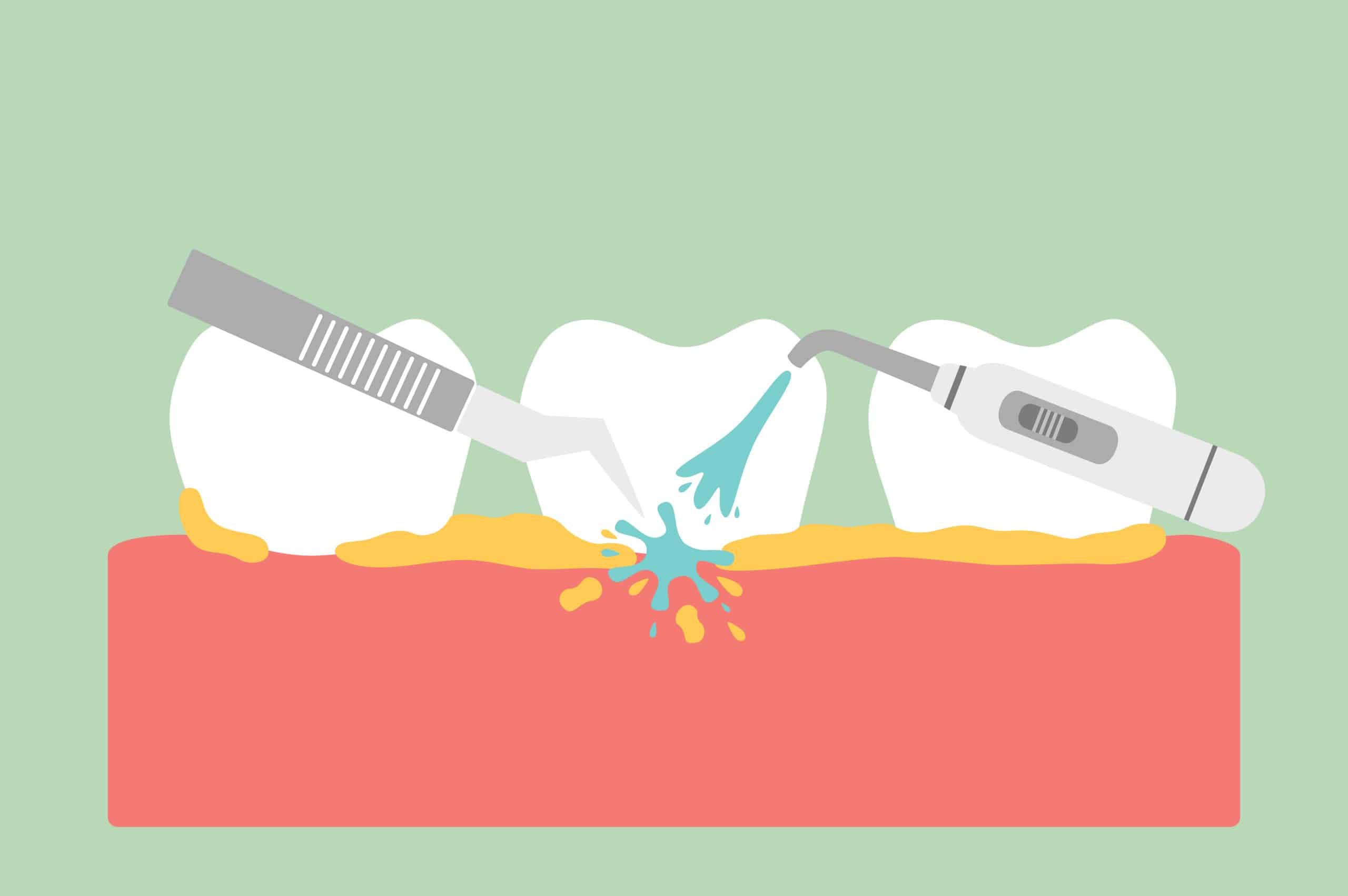7 out of 10 adults in Canada may have periodontal disease. Periodontal disease attacks the gums and teeth, causing inflammation and bleeding. Some people even lose their teeth if it’s not treated.
Dental scaling and root planning aim to treat chronic periodontal disease so it does not spread and worsen. But what does scaling and rooting involved and how do you know if you need it?
In this article, you’ll learn more about teeth scaling and why it’s needed to keep your teeth healthy.
What Is Dental Scaling and Root Planning?
Dental scaling and root planning are two separate procedures, but they’re done in the same appointment. Some dentists even refer to these procedures as “deep cleaning”.
Plaque and tartar are the key factors in the advancement of periodontal disease. When you have an excess plaque on your teeth, your gums begin to break down and the onset of periodontal disease begins.
Dental scaling removes the plaque from your teeth so it can no longer eat away at your teeth and gums. They reach below the gum line to all the plaque and tartar so there’s none left to do any damage.
After dental scaling, your dentist moves on to the second part of the procedure: root planning. Because your dentist reaches plaque and tartar underneath the gum line, they pull your gums back from your teeth. Root planning is the process of replacing the gums to encourage them to reattach to your teeth.
Benefits of Dental Scaling and Root Planning
While scaling and root planning are typically not general procedures, there are some benefits for patients. Here are some potential benefits to scaling and root planning.
Scaling and root planning reduces the risk of serious dental problems. If left untreated, you could suffer from tooth loss, bone loss, shifting teeth, and even health problems throughout the rest of your body, like heart disease, diabetes, or high blood pressure. Removing the plaque and tartar keeps your gums, teeth, and body healthy.
Your teeth look and feel better. Tartar build-up causes your teeth to look dark along the roots, and no amount of brushing properly loosens it.
Gum inflammation causes bleeding and pain during brushing or eating. When you take away the plaque and tartar and encourage the reattachment of the gums to the teeth, your pain lessens and your gums normalize.
In the early stages of periodontal disease, the gums pull away from the tooth. Root planning re-attaches the gum to the tooth so it fits securely, blocking the way for more tartar or plaque build-up.
The Scaling and Rooting Process
Getting your teeth scaled is often recommended by your dentist to stop periodontal disease in its tracks. At first, you might not know what to expect, but there are ways in which the dentist makes you comfortable. Here’s a glimpse of the overall process of scaling and root planning.
You will schedule a time to come to the dentist’s office. This is a non-surgical procedure, but it may take about an hour depending on the severity of the plaque and tartar build-up. Make sure you schedule an appointment at a time that’s convenient but flexible in case more time is needed.
Sometimes you may need an additional appointment. The staff at the dental office can help you schedule your second appointment if needed.
Dental scaling can be uncomfortable, so your dentist will administer a localized numbing agent to make you more comfortable. If you have difficulty with pain, you can discuss other pain-management options with your dentist.
The scaling procedure happens first. Once you are numb, the dentist uses a tool to begin scraping off the plaque along the gumline. Moving on to root planning, they use another tool to smooth your tooth roots which allows your gums to reattach more easily.
Once you are finished, your dentist will show you their work. You may make an appointment to return for another procedure and the dentist will discuss caring for your teeth when you get home or prescribe an antibiotic if necessary. Your dentist may want to see you several weeks afterward to ensure you’re healing properly.
What to Expect After Dental Scaling
After your dental scaling and root planning, you may have some take-home instructions on caring for your teeth. Here are some ways to tend to your teeth after your procedure.
Take any medications your doctor prescribes as directed. This helps destroy any bacteria you may come in contact with during the procedure or may encourage healing.
It’s normal to have some sensitivity and tenderness after scaling and root planning. You can take over-the-counter medications like ibuprofen to help manage the discomfort for the first few days.
Eating and drinking may seem challenging, so stick to soft foods until you can manage harder ones. Always follow your dentist’s instructions for eating.
Rinse your mouth with warm salt water. Warm salt water helps kill bacteria and is soothing to the gums.
Your dentist will recommend that you continue a healthy oral routine that involves brushing and flossing. They may even prescribe specific brushes or hygiene products that help with healing and getting your teeth back to normal.
You’ll also see the dentist more regularly, perhaps three times a year instead of two, so they can track your progress. This is especially true if you’re prone to periodontal diseases.
Do You Need Dental Scaling and Root Planing?
Dental scaling and root planning work to restore your teeth and gums to optimal health so you can avoid periodontal disease. By ridding your teeth of harmful plaque and tartar you can be on your way to having healthy teeth and gums for years to come.
Are you concerned about plaque and tartar on your teeth? We offer deep cleanings and consultations. Contact us today to set up your appointment.




